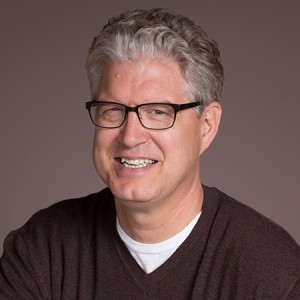This is a guest post by Allen Smart, vice president of programs, Kate B. Reynolds Charitable Trust.
 In a New York Times opinion piece earlier this year by Dr. Adam Grant, a Wharton management and psychology professor, Grant put forward the argument that real innovation comes not from endless practice and refinement but from creating a space for children, in this case, “to think for themselves” and to find “joy in work.” Further, Grant writes that adults’ creative contributions depend on “the breadth, not just the depth, of our knowledge and experience.”
In a New York Times opinion piece earlier this year by Dr. Adam Grant, a Wharton management and psychology professor, Grant put forward the argument that real innovation comes not from endless practice and refinement but from creating a space for children, in this case, “to think for themselves” and to find “joy in work.” Further, Grant writes that adults’ creative contributions depend on “the breadth, not just the depth, of our knowledge and experience.”
These concepts also ring true for philanthropy. We are in the midst of what feels like a downward spiral that started with measurement and return on investment; took a side road to concerns about grantee capacity; and now into the darkest hole of prescriptions and formulas for success that don’t seem to relate to how real people think and feel—or what they need to be successful.
While measurement and capacity building are important, they are not enough to achieve long-term change. What is missing in this work? CREATIVITY! How different would our grant making be if we valued creativity in the same way we value return on investment? Could we actually begin to better identify the partners and projects that can stimulate the next major discovery? Could we encourage our partners and ourselves to think bigger and in the context of the world we live in, rather than the world that we as a funder have created and supported?
I frequently muse about what makes a great philanthropic leader or program officer. For me, this isn’t just a way to pass the time. This is a question at the heart of the very future of philanthropy. If people think that only models and metrics are going to get it done—they are wrong. The future is now, and it’s about intellectual curiosity and seizing opportunity. At the heart of curiosity and commitment is creativity. Philanthropy is in the best position imaginable to dream big and support the creation of a better world.
The last 30 years of the professionalism of philanthropy has left us, unfortunately, with a shortage of philanthropic organizations that are completely committed to maximizing the use of our tremendous human and financial capital. Philanthropy should be exciting and dynamic—not calculating and dreary. We don’t have stockholders to please, and we don’t have to turn a profit. We should be led by boards that are energized by our potential. If not now, then when? The recent wave of new health conversion foundations presents an even greater opportunity to bring back the joy to foundation work.
I first got into this business with a near start-up conversion foundation in the deep south. I remember how rewarding and exciting it was to approach every day like something big and important was possible. Much of the joy was giving voice to people who had none. At least in our early days, no idea could be easily dismissed since we weren’t burdened by our own self-doubt. What started, for example, as a way to get some rural seniors access to less expensive medication became a wide-ranging model for medication access, education and health improvement. Unfortunately, in too many of our philanthropic roles, too much time is spent figuring out whether something fits in our personal and professional box. Helping others understand our boxes is much less energizing (and important) than helping to create and support the excitement of opportunity.
At the Kate B. Reynolds Charitable Trust where I currently work, we wanted to jump start community engagement in some poor rural counties. We went outside of our comfort zone and looked beyond the players in North Carolina to bring the national playground builder KaBOOM! to these rural communities. The Trust worked closely with KaBOOM! and the communities to craft a new process that was rural friendly and called upon the strengths of the local residents. More than 200 people regularly come out to the playground-build events—sometimes in low-income towns of less than 1,000 residents. The result is not only a beautiful new playground for local children to enjoy but also a sense of community bond and sense of accomplishment that often didn’t exist before. The ability to meet a national program half-way and create a new way of doing business while also bridging historic community divides is fun and exciting.
The time to reinvent philanthropy is now. How tragic it will be for the communities we serve to look back 20 or 40 years from now and realize—despite our amazing resources, privilege and leverage—we didn’t dream big enough to change the world.






